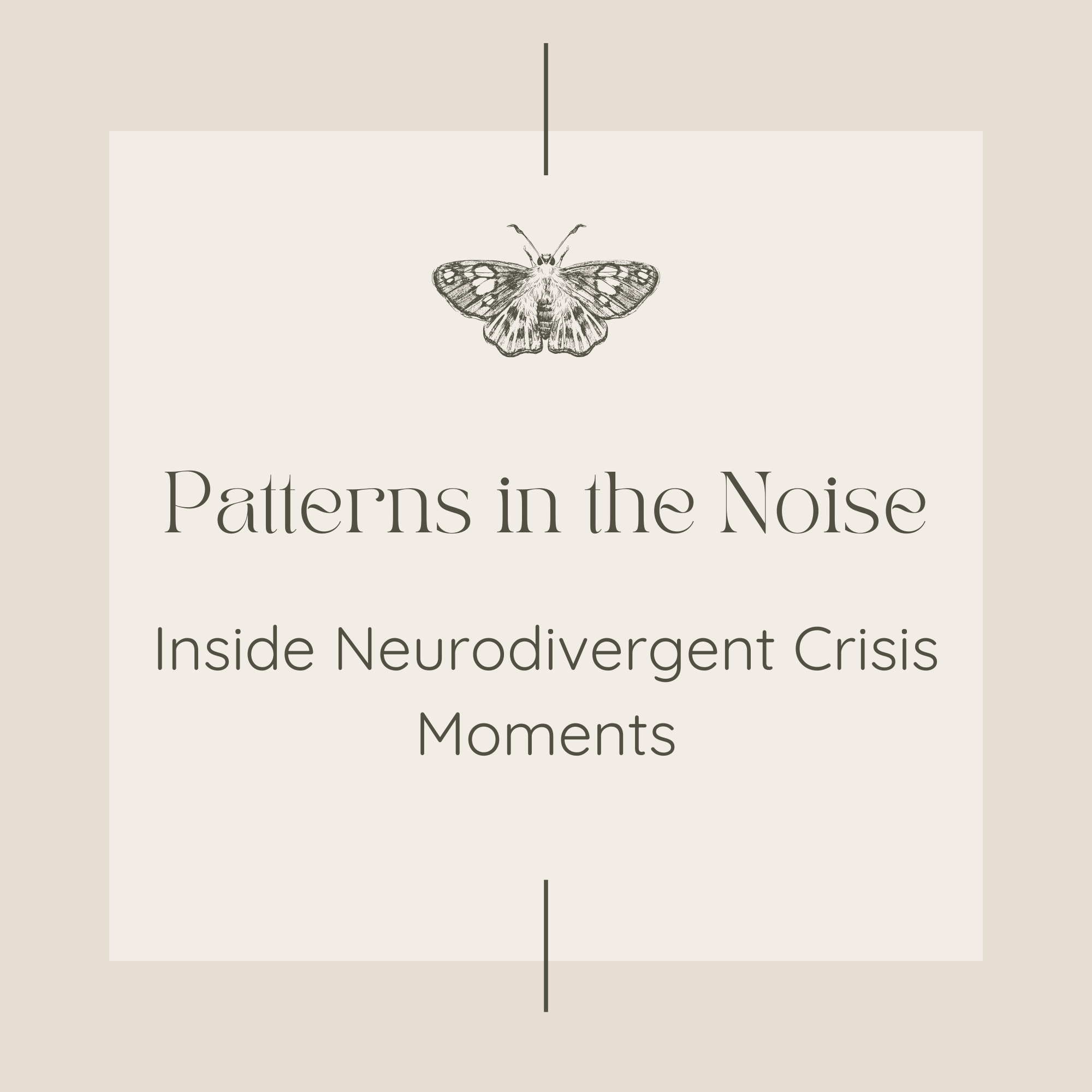Introduction
“It’s like the ground opens up beneath me. I can’t breathe, and suddenly, my mind is spiraling.” Across the screen, I nod, recognizing the pattern. This isn’t just anxiety or depression – it’s what I’ve come to call an “altered state,” a neurological storm that sweeps through the mind with devastating precision. Welcome to therapy in 2024, where we’re finally starting to recognize that traditional approaches don’t always fit the complex reality of neurodivergent experiences – people whose brains process information and respond to the world differently from what society expects.
When the Ground Opens Up
Let’s discuss the intricate and often overlooked aspect of emotional intensity in neurodivergent individuals. This isn’t the tidy, contained anxiety or depression that neatly fits into diagnostic manuals. Instead, picture your nervous system – the body’s emotional and sensory processing network – as a finely tuned instrument cranked up to maximum sensitivity. Every rejection, every overwhelm, every moment of intense emotion doesn’t just register—it reverberates through your entire being like aftershocks from an earthquake.
“It feels like a knife in the chest,” one client describes, trying to capture the intensity of their reactions to judgment or feedback from others. “Like sandpaper on skin, nerve endings firing.” The impact of unexpected negative feedback, especially from someone close, can be physically devastating. This experience is so distinctive it has a name: “Rejection Sensitive Dysphoria” (RSD) – an intense emotional response to real or perceived criticism or judgement that’s common in individuals with ADHD. As one client describes it, “In the bad times, it feels like having your knees kicked out from under you and then a blow to the stomach to knock the air out and a knife stabbed in the chest and ripped open; the mind reels, up is down, I’m left gasping and stammering and shocked.” This isn’t metaphorical pain – the body responds as if to actual physical trauma, triggering real physiological stress responses.
Traditional therapeutic wisdom might suggest sitting with these feelings and processing them carefully. But when you’re in what another client calls “pure torture,” survival takes precedence—fighting to get through to the next moment before attempting to pick up the pieces.
Here’s what many people often hesitate to discuss openly: during moments of intense emotional pain, people frequently reach for anything that might make the feeling stop or become more bearable. This can manifest in many ways: using substances to numb the pain, verbally lashing out at loved ones (sometimes saying hurtful truths previously held back), engaging in self-destructive behaviors, or experiencing thoughts about escape through sleep or death. These responses aren’t signs of moral failure or weakness – they’re desperate attempts to escape unbearable emotional pain.
The lived experience of many neurodivergent individuals includes moments of intense emotional pain, crushing shame, and deep regret over impulsive words or actions in relationships. This often pairs with relentless self-criticism, paralyzing performance anxiety, and exhausting perfectionism. These internal struggles frequently manifest as more recognizable conditions: clinical depression, social anxiety, panic attacks, substance use disorders, post-traumatic stress, sleep disturbances, and physical symptoms like chronic pain, migraines, and digestive issues. These visible challenges often signal a deeper reality – someone working to manage an overwhelmed nervous system while navigating life with hidden executive functioning differences and developmental variations that others can’t see but profoundly impact daily life.
“You will do anything not to feel the piercing emotion,” one client explains, describing their experience with intense RSD episodes, “It’s about wanting the overwhelming intensity to stop.” Understanding this reality isn’t about endorsing these coping mechanisms but acknowledging their existence so we can build better safety plans and find more sustainable alternatives.
The Controversial Role of Distraction
Here’s where we need to challenge some established therapeutic norms. Traditional mental health approaches often emphasize ‘sitting with feelings’ and ‘processing emotions.’ But for many neurodivergent individuals, this approach can be like asking someone to sit quietly in a burning building while trying to analyze the flames. Sometimes, strategic distraction isn’t avoidance – it’s survival.
“I played video games for two days straight,” a client admits, almost apologetically. “I watched TV for hours,” another confesses. But here’s the crucial distinction: when you’re in an altered state where emotional pain has become physically unbearable, distraction can serve as a life raft that keeps you afloat until the neurological storm passes. The key lies in understanding the difference between chronic avoidance (consistently avoiding dealing with problems) and tactical retreat (temporarily stepping back from overwhelming intensity to prevent harmful reactions).
Meltdowns and Shutdowns: The Hidden Language of Situational Overwhelm
We need to talk about meltdowns in neurodivergent individuals. These aren’t the stereotypical tantrums that most people imagine but rather complex neurological responses that occur when a neurodivergent nervous system hits overload. Think of it like a circuit breaker in your home - when there’s too much electrical current, the system shuts down to prevent damage.
These responses typically manifest in two primary ways:
- The explosive meltdown: This is outward, visible, and sometimes emotionally, verbally, or physically violent. It’s the kind of response that shocks observers and often leaves the person feeling intense shame afterward. Imagine a pressure cooker finally bursting after too much internal pressure has built up.
- The shutdown: This is inward, invisible, and involves freezing all systems—often misinterpreted as laziness or willful withdrawal. It’s more like a computer going into sleep mode to prevent system damage. During a shutdown, a person might become nonverbal, unable to move, or seem completely checked out from their surroundings.
“People think it’s intentional,” a client explains, frustration evident in their voice. “But it’s like my whole system just… crashes.” Adults may seem “normal,” insightful, resourceful, or unusually intelligent (words other people may use for them), so what is said or done during shutdowns and meltdowns is taken at face value.
This isn’t about bad behavior or lack of self-control – it’s a neurological response to overwhelming input, as automatic and uncontrollable as your hand jerking away from a hot stove.
The Window of Tolerance: A Different Framework
Instead of viewing these responses as behavioral problems, we need to understand them through the lens of what neuroscientists call the “window of tolerance.” Imagine this window as a comfort zone where your nervous system functions optimally. Within this zone, you can think clearly, respond appropriately to situations, and manage your emotions effectively.
For neurodivergent individuals, whose brains already operate differently at baseline, this window is often narrower than for neurotypical people. There are distinct states outside this window:
- Above the window: Hyperarousal (fight/flight response) - characterized by anxiety, agitation, panic, racing thoughts, and emotional flooding
- Below the window: Hypoarousal (freeze response) - marked by shutdown, depression, disconnection, and emotional numbness
The goal for neurodivergent individuals isn’t to never leave their window of tolerance – that’s unrealistic and potentially harmful to attempt. Instead, we work on:
- Recognizing early warning signs before crisis points
- Developing concrete plans for different emotional states
- Understanding that these states are temporary, even when they feel permanent
- Building a personalized toolkit for nervous system regulation
Finding Anchors in the Storm
Navigating overwhelming emotions requires personal anchors—core truths or practices that help weather emotional storms. These vary by individual:
For some, it’s curiosity: “I might feel horrible, but I’m still curious about what happens next.” For others, it’s the certainty of change: “‘Everything changes, including this feeling.’ I repeat this while the storm rages, and within fifteen minutes, I’m exhausted but alive on the other side.”
These anchors aren’t magical solutions, but they can mean the difference between drowning in emotion and surviving until the intensity passes. Think of them as emergency flotation devices—they won’t get you to shore, but they’ll keep your head above water.
The Masking Paradox
One of the most painful patterns in neurodivergent experiences is the masking paradox. Masking refers to hiding or suppressing neurodivergent traits and struggles, and ironically, people often mask most intensely around those closest to them.
“I can’t tell my partner,” clients often say. “They’ll either try to fix it or get too worried and then I have to manage their emotions on top of my own.” This creates a devastating cycle: the people who could offer the most support become the ones we hide from most carefully. The emotional labor of maintaining this mask, especially during periods of intense stress, often contributes to eventual meltdowns or shutdowns.
Think of it like wearing a heavy suit of armor. While it protects you from judgment and misunderstanding, it also exhausts you and prevents genuine connection. The longer you wear it, the heavier it becomes, until eventually you collapse under its weight.
The cost of this constant masking isn’t just emotional - it’s physical. Many clients report experiencing:
- Extreme fatigue
- Increased anxiety, depression, and despair
- Physical symptoms like headaches and muscle tension
- Difficulty maintaining relationships and work performance
- More frequent meltdowns when alone
The Role of Creative Adaptation
One powerful tool is “creative adaptation,” which involves working with rather than against neurodivergent traits. For example, cognitive inflexibility (the mind getting stuck on one perspective) can be transformed into a game: “How many different explanations can we generate for this situation?”
This approach turns potential barriers into strengths:
- ADHD’s novelty-seeking becomes a tool for generating solutions
- Autistic pattern recognition helps identify triggers and responses
- Intense focus can be directed toward understanding emotional patterns
- Strong memory for negative experiences can inform better coping strategies
Building Better Support Systems
Traditional therapeutic approaches often fall short for neurodivergent individuals. Effective support systems must understand:
- Altered states are real neurological events, not behavioral choices
- The distinction between avoidance and necessary tactical retreat
- The need for concrete, practical strategies rather than abstract concepts
- Acceptance without requiring constant explanation or justification
Building these systems often involves educating partners or family members with careful professional boundaries. Sometimes, it means creating structured communication systems, such as shared Google Docs for difficult conversations or specific protocols for overwhelming moments. A crucial element is developing safety plans that acknowledge the full spectrum of human responses to overwhelming emotion. This means having honest conversations about impulses toward self-harm, substance use, or thoughts about death – not to encourage these responses but to address them openly with compassion and practical alternatives. Safety plans identify early warning signs and outline specific actions: calling a designated person, engaging in intense physical activity, or using sensory regulation techniques for example.
Looking Forward
As we move through 2024, recognition of neurodivergent experiences is growing, but significant gaps remain. Clinical evidence points to the need for more nuanced, flexible approaches that acknowledge:
- The physical intensity of neurodivergent emotional experiences
- The validity of unconventional coping strategies
- The necessity of practical, concrete tools over abstract therapeutic concepts
Healing rarely follows a predictable path. Sometimes it involves video games, seemingly illogical decisions, or “unproductive” activities. Success means finding what works for each individual’s unique neurological makeup.
In the Trenches
Daily clinical practice reveals the extraordinary courage required to navigate these challenges. Clients fight their symptoms and societal misconceptions about what managing should look like. They build tools, create strategies, and learn to work with their neurodivergent traits rather than against them.
The patterns emerging from this work are clear: We need approaches that honor neurodivergent experiences while providing practical tools for navigation. We must validate the intensity of these experiences while building concrete survival strategies. Most importantly, we must recognize there isn’t one path to healing—there are as many paths as individuals are walking them.
As 2024 progresses, we continue developing more nuanced, effective approaches to supporting neurodivergent individuals. Not just for the individuals themselves but so they can help families, communities, businesses, and the economy thrive. The patterns are there in the noise – we just need to listen more carefully to hear them.

